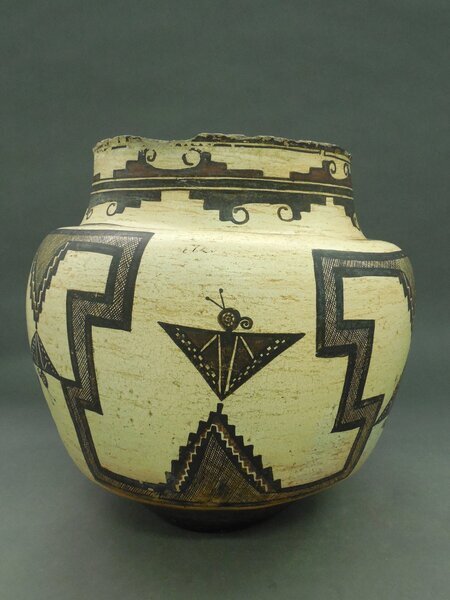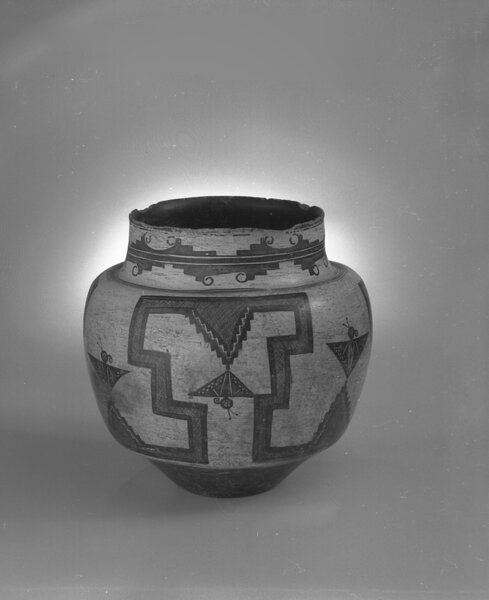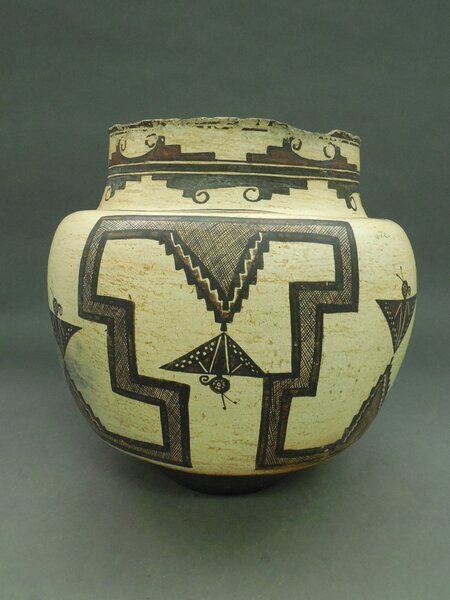Water Jar Item Number: 03.325.4723 from the Brooklyn Museum





Description
Jar, black on white exterior. This oversize water jar has a butterfly design, a symbol often associated with water, set within a large, continuous stepped figure on the body. The neck design consists of a continuous stepped band with curled figures attached. In use it would have a piece of hide stretched and tied across the top, thus accounting for the rough edges on the jar. Red writing on base reads "03.325.4723" and "03.132," partial number is written in black on the side. Condition: Small hole in base, worn rim
Credit Line
Museum Expedition 1903, Museum Collection Fund
Label
A woman probably made this delightful water jar, since all pottery was done by women during the nineteenth century. The jar was created in a traditional manner: clays dug locally from around Zuni Pueblo were hand-kneaded with old sherds worked into the clay as temper, coiled into shape, and smoothed; mineral paints and slips were applied, and then the vessel was fired within an open fire. Scholars refer to this full-bodied style as Kiapa Polychrome, a style between the earlier polychrome jars that have low bulges in their bodies and a later style that has a high shoulder bulge. The butterfly was one of several motifs favored by Zuni artists. Others were water symbols such as tadpoles and frogs, deer with a heart-line motif, and hunting animals. The early curator Stewart Culin collected this vessel from Andrew Vanderwagon, the owner of the Zuni trading post where Culin stayed when he was collecting in 1903. Today Zuni pottery is still made in the traditional manner, although some potters are men and some use an electric kiln to add consistency to the firing.
Item History
- Made between 1825 and 1850
What
Who
- Culture
- She-we-na
Where
- Holding Institution
- Brooklyn Museum
When
- Creation Date
- between 1825 and 1850
Other
- Classification
- Vessel